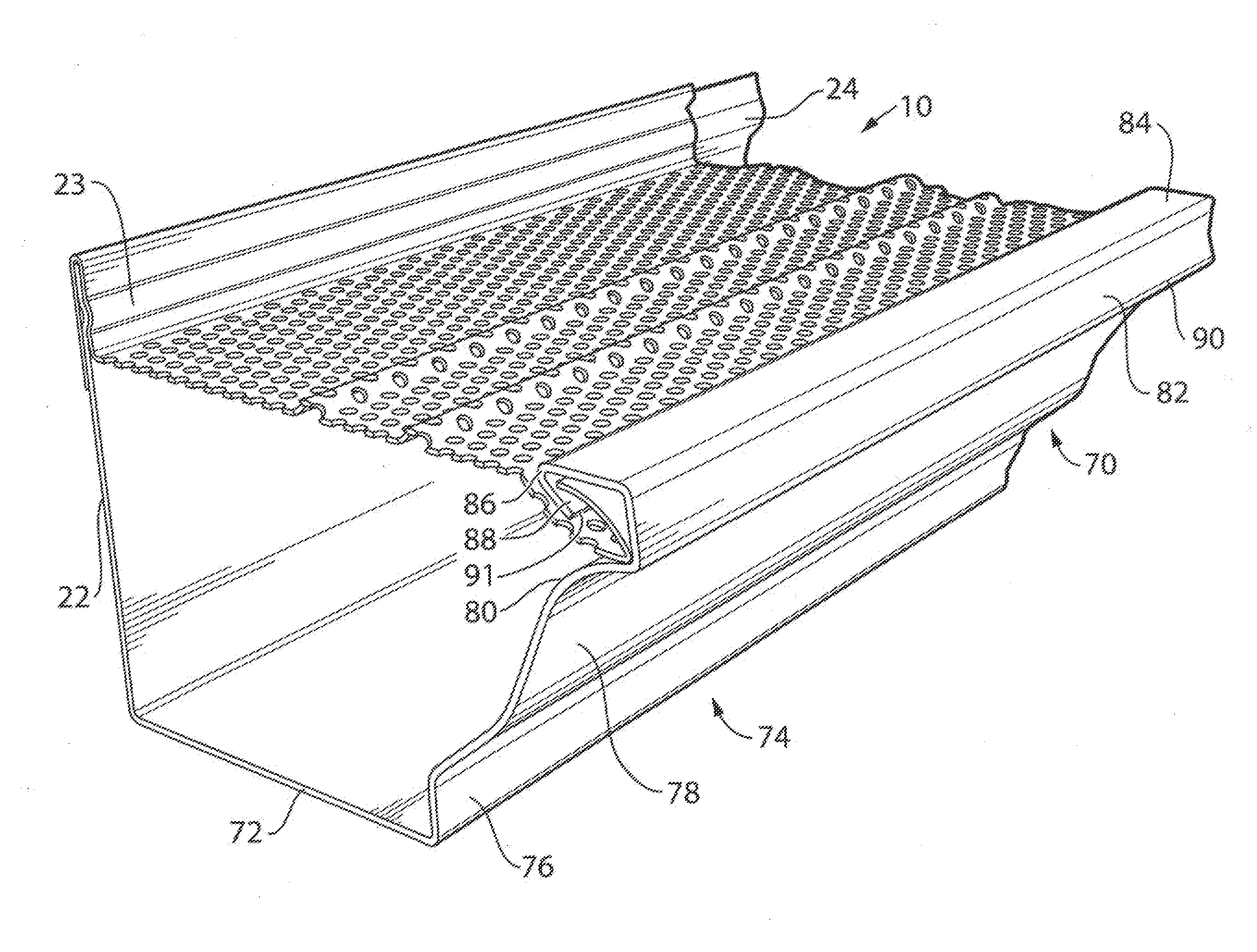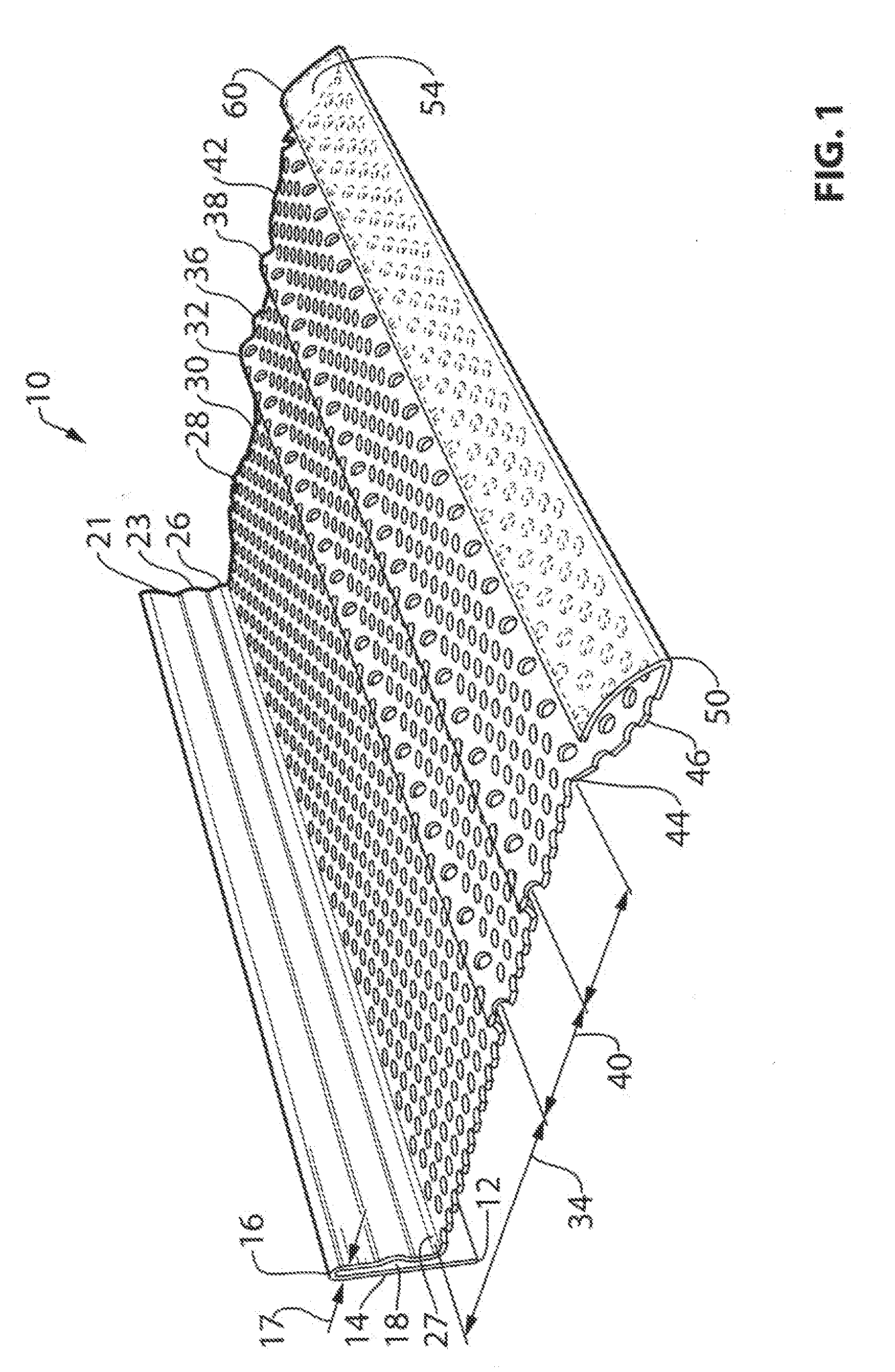Gutter cover with snap-in hanger attachment
- Summary
- Abstract
- Description
- Claims
- Application Information
AI Technical Summary
Benefits of technology
Problems solved by technology
Method used
Image
Examples
Embodiment Construction
[0027]Referring to FIG. 1 there is shown a perspective cross-sectional view of one first embodiment of the invention which is a mesh screen cover 10 for a gutter having a snap-in hanger attachment. The cover 10 is a single piece rolled from aluminum, stainless steel or some other suitable material that is malleable for rolling and resistant to rust. Generally the width of the cover is made to suit the dimensions of the gutter being covered which can vary. Typical sizes are 5 inches wide and 6 inches wide. The length of the cover can be any suitable continuous length.
[0028]Referring to FIG. 1, the cover is a single member comprising a first end 12 from which rises an inside (left) vertical upward section 14. Vertical section 14 merges with a 180° U-shaped bend 16. The U-shaped bend 16 creates a space 18 between vertical section 14 and vertical downwards section 21. This space 18 has a width 17 that is able to receive a gutter back wall 21 as illustrated in FIG. 2.
[0029]Still referrin...
PUM
 Login to View More
Login to View More Abstract
Description
Claims
Application Information
 Login to View More
Login to View More - R&D
- Intellectual Property
- Life Sciences
- Materials
- Tech Scout
- Unparalleled Data Quality
- Higher Quality Content
- 60% Fewer Hallucinations
Browse by: Latest US Patents, China's latest patents, Technical Efficacy Thesaurus, Application Domain, Technology Topic, Popular Technical Reports.
© 2025 PatSnap. All rights reserved.Legal|Privacy policy|Modern Slavery Act Transparency Statement|Sitemap|About US| Contact US: help@patsnap.com



